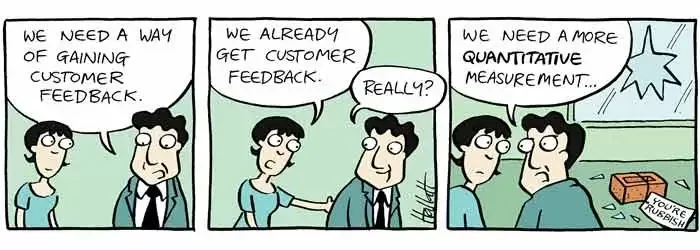A Start-Up’s Take on the Art of Processing Customer Feedback
Let me introduce you to the employee I always wanted on staff but never had the opportunity to hire. “John” is an engineer in a medium-sized consulting office in Texas. He regularly contacts our office to let me know what he likes about our HEC-RAS software, what he doesn’t like, and what features we should consider integrating into our next release. His discipline and drive are exemplary; like clockwork he phones in bi-weekly and shares with us a few key things on his mind. He tests GeoHECRAS like a newly minted drill officer, challenges its capabilities with a vigorous regime of practical tasks, and gives me his honest, no-frills feedback. Again, he’s not my employee, but his input is as valuable, if not more valuable, than that of folks on my payroll. I need to hear this engineer’s opinions to create a better product; to ignore it would be stupid and irresponsible. Like a miner at the height of the Gold Rush methodically sifting through pans of river stone to gain a few golden nuggets, I’ve developed a few techniques and guidelines to collect, sort through and manage customer feedback. This isn’t a comprehensive list, but it gets at some key points.
Use Multiple Funnels to bring in Client Feedback
Short of asking a client to “pull up a chair” and join the meeting I have with developers every morning, I want to give users of our product plenty of ways to talk to us. Customer feedback gauges the relevance of our product and our company. Clients can use email, voicemail and in many cases immediately talk to a support engineer when they have a comment or want to report a technical glitch. Any calls that come in are our equivalent of a “911” summons. A support engineer will call back within an hour and video-record the customer’s screen to document the issue. This encourages clients to create a business case for why we should add or modify a feature. Volume of feedback on a particular issue helps us prioritize work items. Multiple channels of communication and a quick response time on our part allows us to sort and prioritize more efficiently.
Don’t Send it to the Committee
It may be that as a company gets bigger, its ability to maintain that one-on-one connection with customers gets lost. CivilGEO is still a start-up in many respects and as software engineer and director I can flit between projects and clients as I like. But, even as CivilGEO grows, this one-on-one connection with our customers will remain front and center. I have worked at firms that document, sort and file customer feedback, but don’t require much more than that. At these firms, a certain volume of calls triggers a formal review process by committee. This committee rarely interacts with those in charge of product development—and rarely, if ever, even talks to customers.
Take the Time to Talk
If a customer calls in, we try to have conference call with them that day to try to figure out the scope and severity of the problem. Depending on the importance of the request, we can have a developer working on the issue that very same day. This not only applies to technical glitches but requests for additional capability. We try to project how long the issue will take to code and we share this information with the client.
Deliberate before you Dive
Clearly it is important to address technical glitches in the software as efficiently as possible. However, the market is full of applications that were rushed into code without adequate planning or research. We have all seen it. The result is a feature that looks sloppy and performs badly, compromises the value of your product and tests the loyalty of your most reliable customers. This is one of our challenges as we consider integrating fish habitat modeling capabilities into HEC-RAS. This is a complex area that requires a lot of planning. We are not going to rush into this one, but you can be sure that when we do release a HEC-RAS version with fish modeling capability, the work that went into research and design will be obvious. Similarly, a lot of our customers are waiting for GeoHECRAS with 2D HEC-RAS modeling capability to be released. In order to implement this capability well, a large part of the GeoHECRAS interface needed to be completely redesigned and rearchitected. It’s a laborious process, but it will be worth it.
The main thing is to treat customer feedback as the “gold nugget” that it really is. You can have hordes of “testers” in your company that give you print-outs and performance results, but what you really need is that testimonial from a client who knows first-hand what your software needs to do. Grab him, give him a seat at the table, and listen!





















